Owning a pool is a wonderful luxury. It offers a refreshing escape during hot summer days and a fun spot for family gatherings. Yet keeping your pool in top condition requires regular upkeep, which can sometimes feel overwhelming.
Maintaining your pool can become simpler and more manageable with the right tips and tricks.

You’ll discover how to tackle common pool problems efficiently, ensuring clear and safe water during the swimming season. The following hacks will save you time and help you avoid costly repairs.
Stay tuned to learn how to keep your pool clean and inviting with minimal hassle.
1. Test and Adjust pH Levels
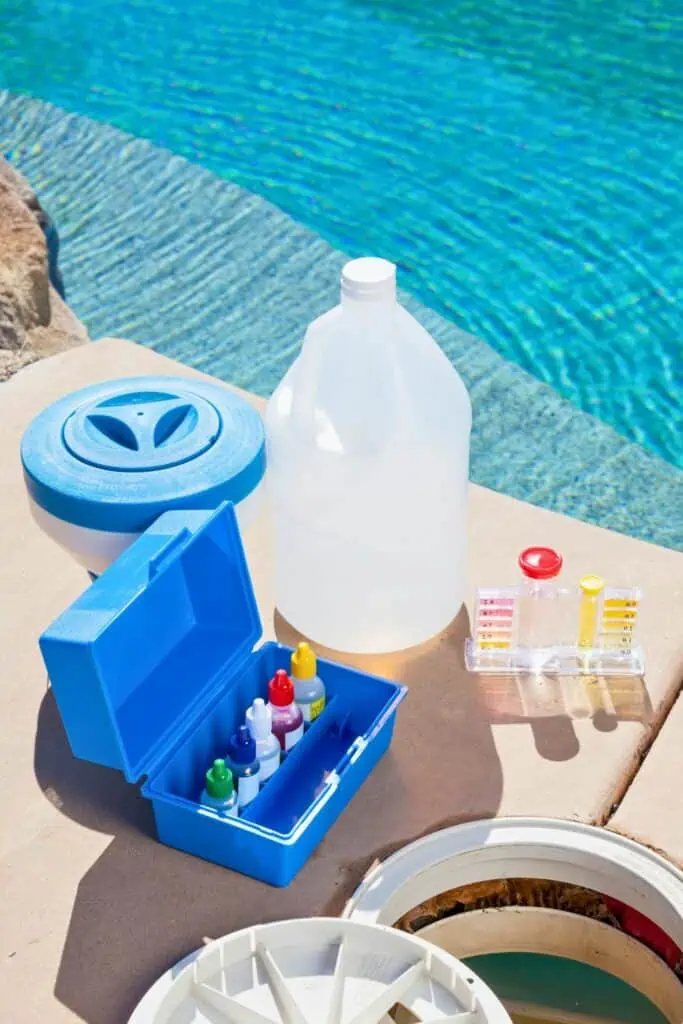
Maintaining the right pH level in your pool is essential for clear, safe water. The ideal pH range is between 7.2 and 7.6. Testing your pool’s pH level at least weekly ensures it stays in this range.
Use a reliable pool test kit or strips to measure the pH. Follow the instructions provided with the kit. Match the test strip color to the chart to determine your pool’s current pH level.
Your water is too acidic if the pH is too low (below 7.2). To raise the pH, add sodium carbonate (soda ash) gradually. Always follow the manufacturer’s instructions for the correct amount to use.
If the water’s pH is too high (above 7.6), it is too basic. Lower the pH by carefully adding muriatic acid. For safety, wear protective gloves and goggles. Slowly pour the acid into the deep end of the pool.
Regularly testing and tweaking the pH will keep your pool water comfortable and prevent damage to the pool surfaces and equipment. It’s a simple step that makes a big difference in your pool maintenance routine.
2. Skim and Clean the Pool Surface
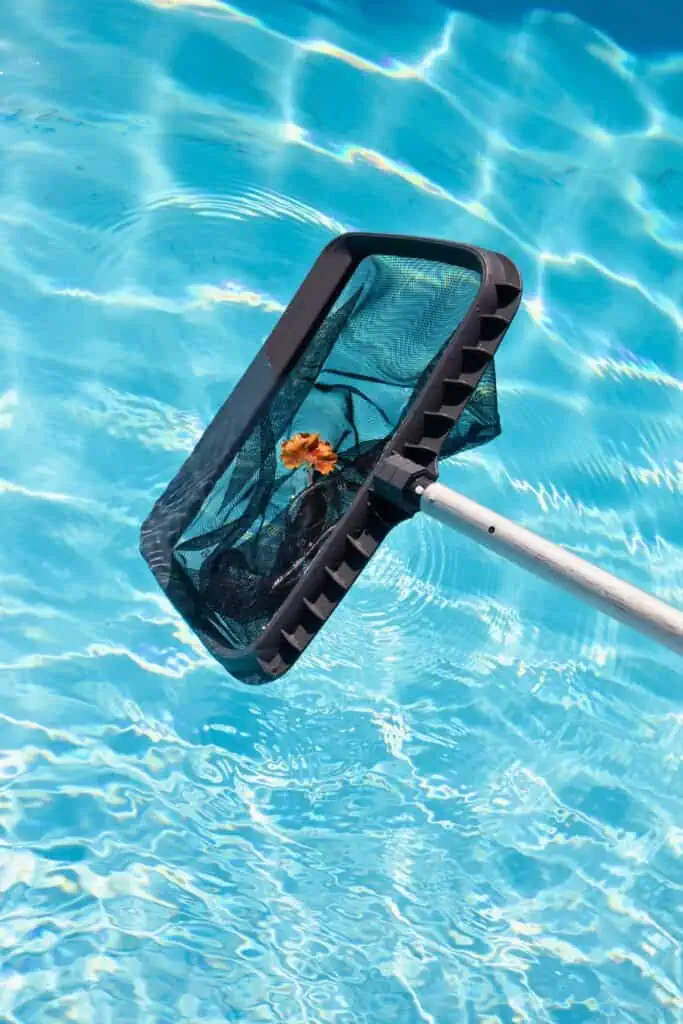
Skimming the surface of your pool helps keep it clean and sparkling. Use a hand skimmer with a net attached to a telescopic pole. This tool lets you reach debris floating on the water’s surface.
Make it a habit to skim your pool every day. Leaves, bugs, and other debris often float for a few hours before sinking. Removing them quickly prevents them from clogging your pool’s filters.
Empty the net often to keep it light and easy to use. This will make skimming faster and more efficient. Also, remember to check the skimmer basket and clean it out regularly.
Skimming regularly will reduce the amount of debris in your pool. This will make it easier to maintain overall water quality and keep your pool inviting for everyone.
3. Brush Pool Walls and Floor
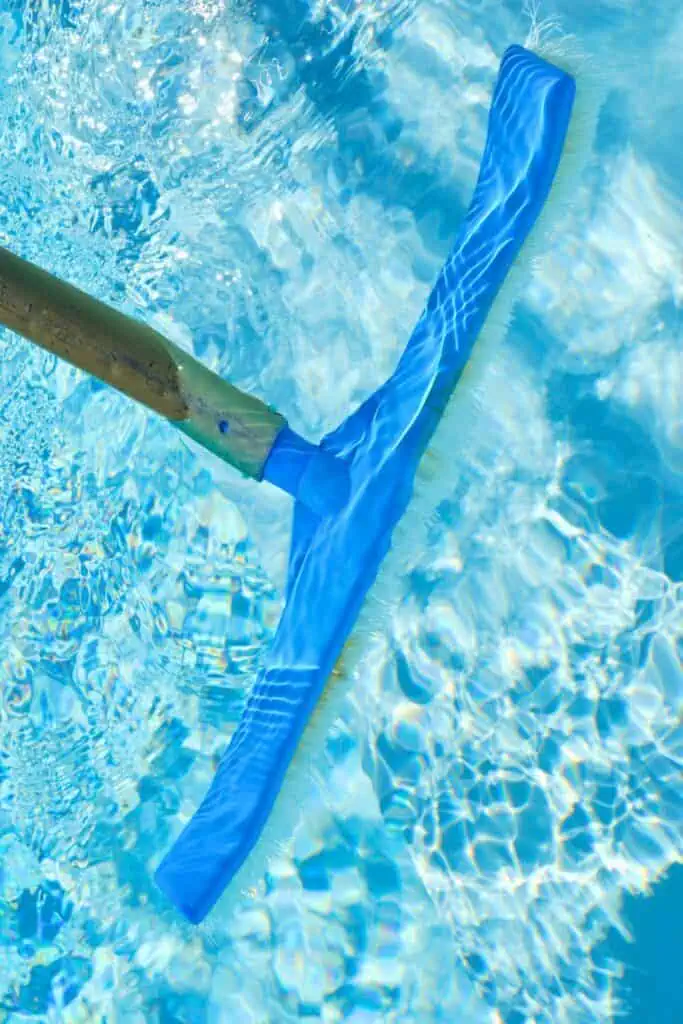
Brushing your pool walls and floor is a key task that helps keep your pool clean. Algae and dirt can build up on these surfaces if not regularly brushed.
Use a pool brush with nylon or stainless-steel bristles, depending on your pool’s surface. Brush all areas, especially corners and crevices, where debris tends to hide.
Brush at least once a week. This helps prevent algae growth and keeps the water clear. Regular brushing also helps the pool’s filtration system work more efficiently.
Don’t forget to brush around ladders, steps, and behind pool fixtures. These spots are often overlooked but can harbor dirt and algae.
Brushing your pool walls and floor regularly helps maintain a healthy swimming environment. It’s a simple task that goes a long way toward keeping your pool in top shape.
4. Check and Clean the Pool Filter

Your pool filter is crucial for keeping your pool water clear and clean. Start by reading your pool filter gauge. If the pressure is about 10 psi higher than usual, it’s time to clean or backwash the filter.
Turn off your pool pump before you begin. For a sand filter, set it to “backwash” for 3-5 minutes. Then, turn it off and set it to “filter.” Open the pump lid and add a sand filter cleaner to the strainer basket based on the manufacturer’s instructions.
If you notice sand at the bottom of your pool, it might mean there’s a broken part inside the filter. You must dismantle the filter, empty the sand, and inspect for damage.
Regular cleaning ensures the filter does its job properly. For cartridge filters, remove the cartridge and rinse it with a hose. Use a filter cleaner if needed to clear out any stubborn debris.
Remember, a clean filter helps maintain safe and sparkling pool water. Make it a habit to check and clean your filter regularly. This simple task will save you time and trouble in the long run.
5. Monitor and Maintain Chlorine Levels

Keeping your pool’s chlorine levels in check is key to having clear and safe water. Start by testing the chlorine at least twice a week. You can use reliable test kits or electronic testers.
Aim for a chlorine level between 1-3 parts per million (ppm). This range ensures germs are killed without irritating swimmers’ skin or eyes.
If the levels are too low, add chlorine to the pool. You can use chlorine tablets, granules, or liquid chlorine. Follow the instructions on the product for the right amount to add.
Remember to distribute the chlorine evenly. This helps avoid concentrated spots that could be harmful. After adding chlorine, operating your pool pump for a few hours ensures it spreads throughout the water.
Regular testing and adjustment are essential to keeping the water safe and enjoyable. Additionally, factors like heavy pool use, rain, and hot weather, which can affect chlorine levels, should be considered.
6. Shock the Pool Weekly
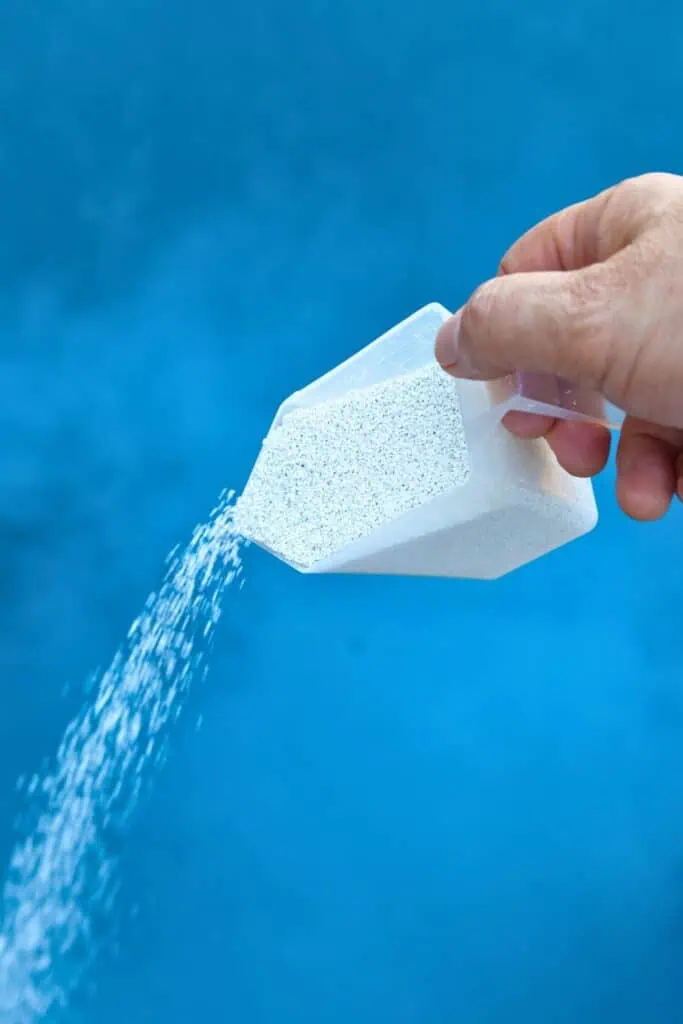
Shocking your pool weekly keeps the water clear and safe for swimming. When you shock the pool, you add extra chlorine to kill bacteria, algae, and other contaminants.
Rain, heavy use, and other factors can affect the pool’s chemical balance. By shocking the pool weekly, you help maintain the right chlorine levels.
To shock your pool, follow the instructions on your chlorine shock product. Usually, you’ll dissolve the shock in a bucket of water and pour it into the pool or distribute it evenly around it.
Run the pool pump for a few hours after shocking. This helps circulate the chemicals and ensures they are evenly distributed.
If you notice cloudy water or a strong chlorine smell, it might signal you need to shock the pool more often. Keep an eye on those signs to maintain a healthy swimming environment.
7. Use a Pool Cover

A pool cover is a simple tool that can make a big difference in keeping your pool clean. By covering your pool, you reduce the amount of dust, leaves, and insects that get into the water.
Using a pool cover also helps maintain water quality. It keeps out impurities, so you’ll spend less time and money on chemical treatments.
Another benefit is safety. A pool cover can keep kids and pets from accidentally falling into the water when the pool is not in use.
Pool covers also help conserve water by reducing evaporation. This means you won’t need to refill your pool as often, saving water and time.
Different types of pool covers are available, including manual, semi-automatic, and automatic options. Choose one that fits your needs and budget.
Use it to get the most out of your pool cover whenever the pool is not in use. This simple step can greatly improve your pool maintenance routine.
8. Check Water Levels Regularly
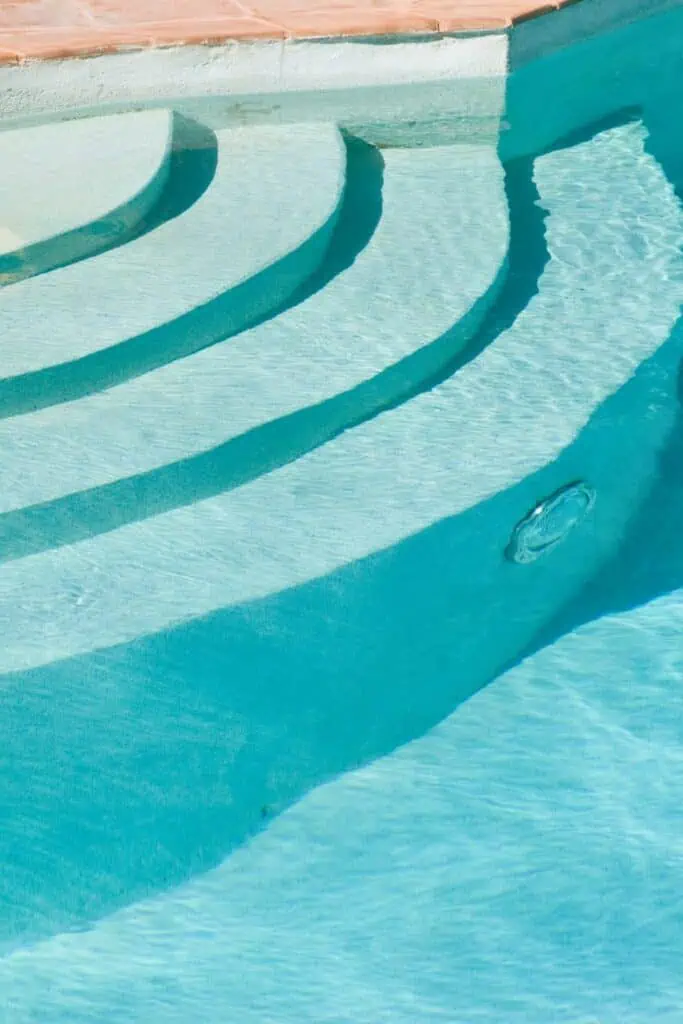
It’s important to monitor your pool’s water level. If it’s too low, your pump can run dry and become damaged. If it’s too high, the skimmer might not work properly, affecting filtration.
You should check the water level at least once a week. Because of evaporation, you might need to check more often in hot weather. You should also take a look after heavy rainfall, as rain can raise the water level quickly.
Use the middle of your skimmer as a guide. The water level should be about halfway up the skimmer opening for optimal performance. If you need to add water, use a garden hose. You can also use a submersible pump or backwash a little to lower it.
Keeping the right water level helps ensure that your pool is clean, safe, and ready for fun. Regular checks are easy and take just a few minutes. Make it a part of your routine for a hassle-free swim season.
9. Clean the Skimmer Basket
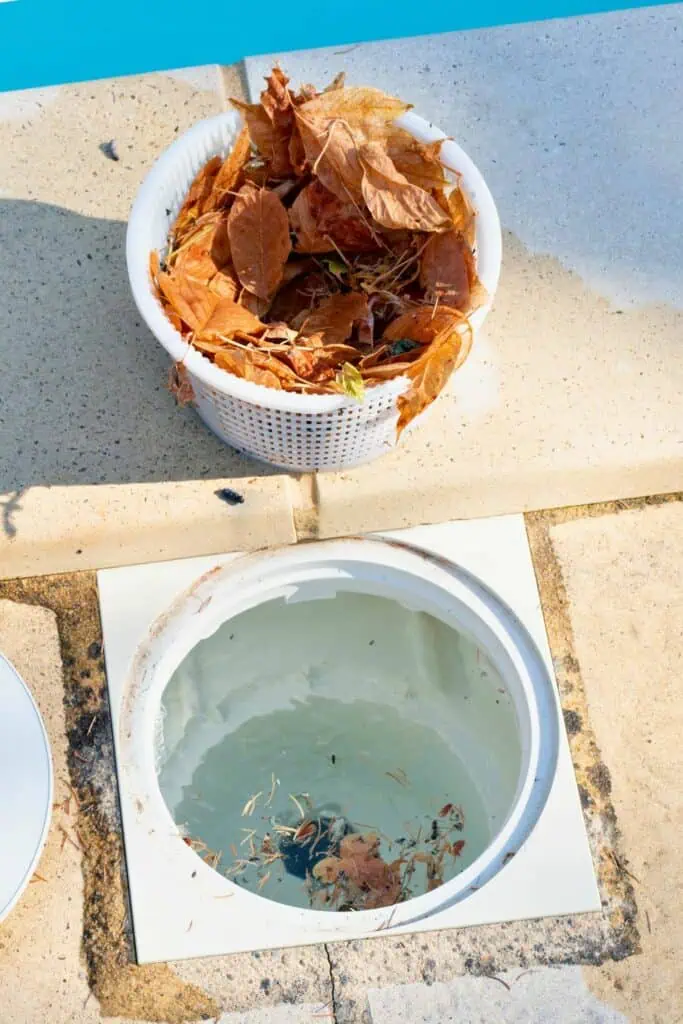
Cleaning the skimmer basket is crucial for keeping your pool in tip-top shape. The skimmer basket catches leaves, bugs, and other debris before they clog your filter or pump.
First, turn off the pool pump. You don’t want anything getting sucked in or hurt while you work.
Next, remove the skimmer lid. Sometimes, it sticks, so you might need to wiggle it a bit.
Take out the basket and dump its contents into a trash bag or bin. The basket is usually filled with leaves, bugs, and other debris.
Rinse the basket with a hose to remove any stubborn dirt. Make sure it’s clean so water can flow easily through it.
Put the basket back in the skimmer. Make sure it sits properly so it can do its job.
Reattach the skimmer lid and turn the pool pump back on. Your pool should be running smoothly again.
It’s a good idea to clean the skimmer basket at least once a week. Doing this regularly helps keep your pool clean and your equipment working well.
10. Vacuum the Pool Regularly
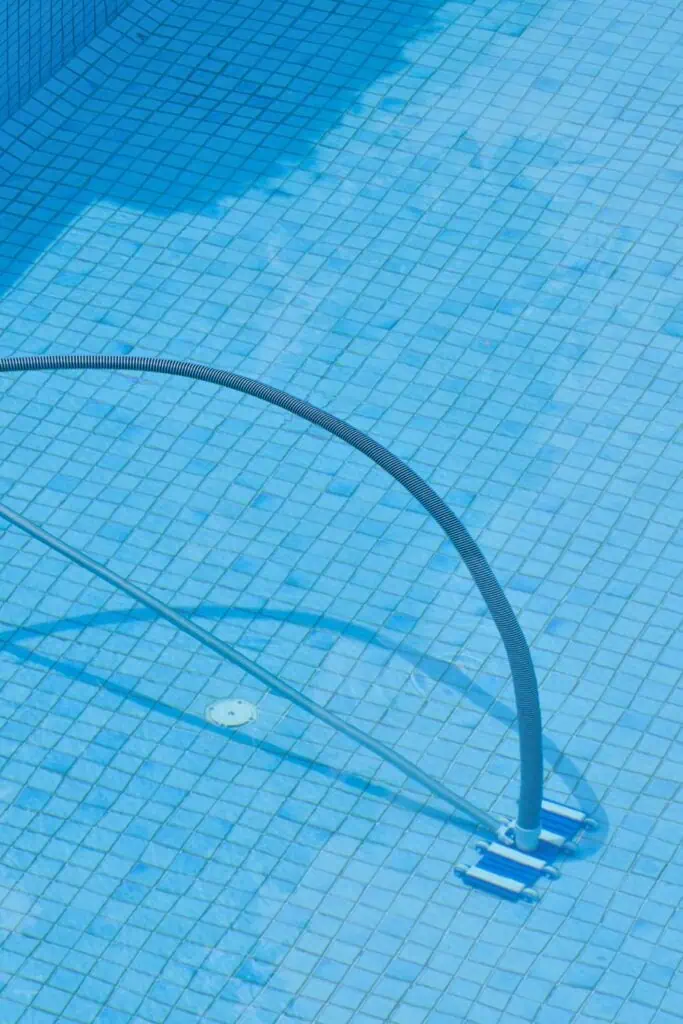
Vacuum your pool regularly to keep it clean. Ensure your pool vacuum, telescopic pole and hose are in good order.
Attach the vacuum head to the telescopic pole. Then, connect the pool hose to the vacuum head. Ensure everything is securely attached.
Lower the vacuum head into the pool. Submerge the hose completely, allowing it to fill with water.
Find the end of the hose that can spin and connect it to the suction port of your pool’s pump. Check that it’s firmly attached.
Now, you’re ready to vacuum. Move the vacuum head slowly across the pool floor, overlapping each stroke to cover the entire area.
Focus on areas with visible dirt or debris, but ensure you clean the whole pool. This keeps the pool looking nice and extends the life of the filtration system.
After vacuuming, detach the hose and pole. Store these parts in a clean, dry place to prevent damage.
Regular vacuuming is essential to maintaining a pristine pool. Adding this to your routine can improve your pool’s cleanliness and swimming experience.
11. Balance Alkalinity

Balancing the alkalinity in your pool is crucial for keeping the water safe and clean. Start by testing the water regularly with a reliable pool testing kit. Aim for an alkalinity level between 80 and 120 parts per million (ppm).
If the alkalinity is too low, add sodium bicarbonate (baking soda) to raise it. Follow the instructions on the packaging for the correct amount to use. If the alkalinity is too high, you may need to add muriatic acid to lower it. Be careful when handling chemicals and always wear protective gear.
Adjusting your pool’s pH first can make balancing alkalinity easier. The ideal pH level is between 7.2 and 7.6. You might need to make small adjustments and retest the water until you get it right. Regularly checking and balancing alkalinity ensures your pool water stays clear and comfortable.
12. Inspect and Maintain the Pump
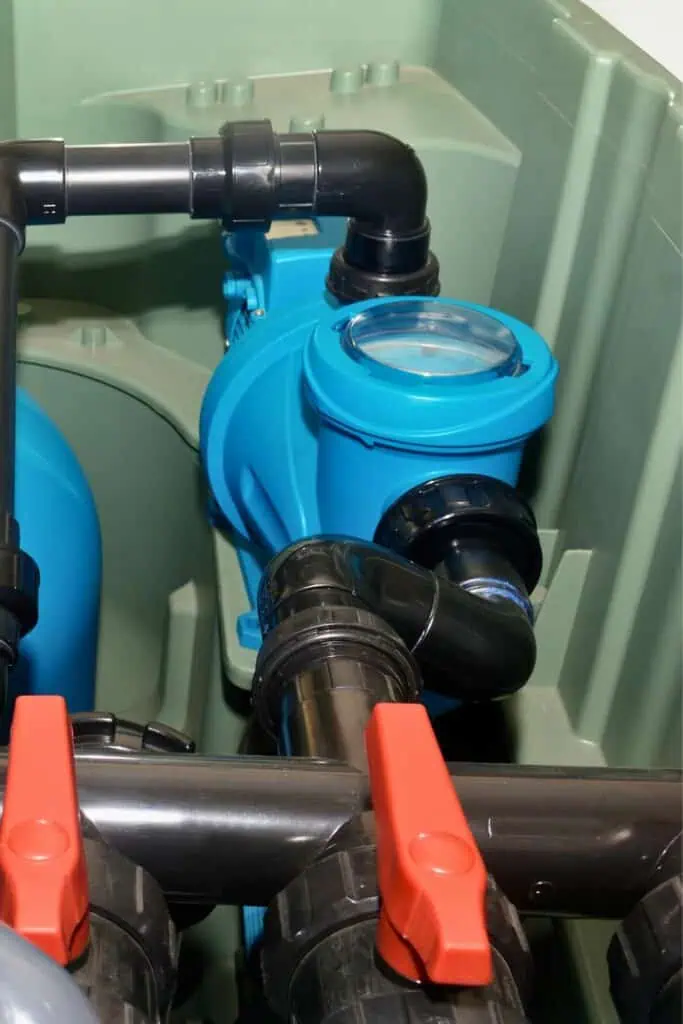
Your pool pump is the heart of your pool’s circulation system. Checking it regularly ensures smooth operation.
Rinse the pump basket thoroughly with a hose to remove debris. Look for cracks or damage. Replace the basket if necessary.
Make sure the pump lid is tightly closed. A loose lid can let air into the system, which can cause problems.
Check the filter gauge weekly. A clogged filter makes the pump work harder and less efficiently.
Keep an ear out for unusual noises. Strange sounds could mean mechanical problems, which can be caught early and save time and money.
Understanding Pool Chemistry

Knowing the basics of pool chemistry is essential for keeping your pool water clear, safe, and inviting. This section explores the importance of pH balance, the role of sanitizers like chlorine, and how to manage alkalinity effectively.
The Role of pH Balance
pH measures how acidic or basic your pool water is, with a scale from 0 to 14. The ideal pH range for a pool is 7.2 to 7.6. Keeping the pH in this range ensures the water is comfortable for swimmers and helps to protect your pool equipment.
If the pH is too low (acidic), it can cause skin and eye irritation. It can also corrode metal parts and damage the pool surface. If the pH is too high (basic), the water can become cloudy, and chlorine will not be as effective. Regularly test your pool water and adjust the pH with either pH increaser or pH decreaser as needed.
Chlorine and Other Sanitizers
Chlorine is the most common pool sanitizer. It kills bacteria and other contaminants that can make your pool unsafe. The recommended chlorine level in a pool is between 1.0 and 3.0 ppm (parts per million).
You can add chlorine in several forms, such as tablets, liquids, or powders. Stabilized chlorine contains cyanuric acid, which protects it from being broken down by sunlight. This is especially useful for outdoor pools. Besides chlorine, you can use other sanitizers like bromine or saltwater systems, but chlorine remains popular because it is effective and affordable.
Managing Alkalinity
Alkalinity acts as a buffer for pH, helping to keep it stable. The ideal range for total alkalinity in a pool is 80 to 120 ppm. If alkalinity is too low, the pH can fluctuate wildly, leading to problems with water balance. If it’s too high, the water can become cloudy and scaling can occur.
Use sodium bicarbonate (baking soda) to raise alkalinity. To lower it, use muriatic acid or a special alkalinity reducer. Regular testing helps ensure your pool remains in the proper range. By managing alkalinity, you support the overall health of your pool water and simplify pH control.
Monitoring these elements helps you enjoy a cleaner, safer, and more inviting pool.
Regular Cleaning Tips
Proper pool maintenance involves regular skimming, vacuuming, brushing, and filter care. Keeping your pool clean not only ensures a sparkling appearance but also extends the life of your pool equipment.
Skimming and Vacuuming
Skimming the surface of your pool daily helps remove leaves, insects, and other debris. Use a hand skimmer or leaf net to do this.
Vacuuming should be done every few days or weekly, depending on the season and usage. Manual pool vacuums or automatic pool cleaners work well. Manual vacuuming involves attaching the vacuum to your pool’s filtration system and moving it slowly across the pool floor. Automatic cleaners are more convenient and handle vacuuming and sweeping the pool bottom and walls.
Brushing Pool Walls
Brushing is crucial to prevent algae and dirt buildup on the pool walls and floor. Use a pool brush with a telescopic pole to reach all areas.
Brush the walls, steps, and corners at least once a week. Use a stiff-bristled brush for plaster-lined concrete pools, but opt for a softer brush for vinyl or fiberglass pools to avoid scratches.
Regular brushing ensures that algae and grime do not take hold, keeping your pool water clean and clear.
Filter Maintenance
A clean filter is vital for keeping your pool water clean. There are three main types of filters: sand, cartridge, and diatomaceous earth (DE). Each requires different care.
Sand filters need backwashing to remove trapped debris. Do this once a month or when the pressure gauge rises 8-10 psi above normal.
Cartridge filters should be removed and hosed off every 4-6 weeks. Replace the cartridges when they show signs of wear.
DE filters also require backwashing. After backwashing, add new DE powder to keep it functioning properly.
Regularly check and clean your filter to ensure it works effectively, preventing cloudy or dirty pool water.


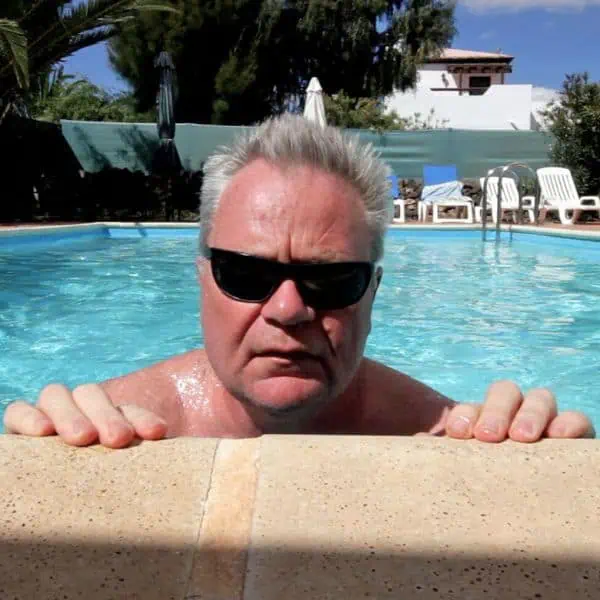



Leave a Reply